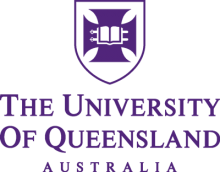Coronavirus has taken the sheen from Australian universities’ golden goose, with discounting, offshoring and other factors slashing the per-student value of international education at many institutions.
A Times Higher Education analysis shows that while overseas enrolments took a battering from Covid-19, average fees did, too. Compared with 2019, per-student earnings at almost half the sector were down at least 10 per cent – and sometimes much more – in 2022, the most recent year for which enrolment and revenue figures are available.
Lower-ranked universities with substantial overseas enrolments fared the worst, relinquishing about 15 per cent to 30 per cent of their per-student income. They now face a big task rebuilding per-student returns as well as student numbers.
International student fees are vitally important to these often cash-strapped institutions; they provided on average 27 per cent of their operating revenue in 2019, but that fell to 20 per cent in 2022.
Another 11 universities saw their per-student income fall by up to 10 per cent. International education analyst Keri Ramirez said almost all Australian universities had offered scholarships to new overseas recruits in 2022, typically reducing tuition costs by 15 per cent to 20 per cent.
“[They] were not necessarily applied to students from all nationalities,” said Mr Ramirez, founder of the Studymove consultancy. “However, overall, they impacted international student revenue in 2022.
“Many of the recruitment strategies were set at the end of 2021, during the most challenging and uncertain period for the sector. Many universities took a conservative approach, set minimum increases in their international fees and reconnected with international markets actively using scholarships.”
He said average international fees had risen by just 1.5 per cent in 2022, compared with 5 per cent before the pandemic. Meanwhile, lockdowns and other “severe challenges” had forced some offshore students to drop subjects, “which ultimately also reduced international revenue”.
Many universities also charged less to students left stranded in their home countries. The University of Queensland, for example, said it had offered a “rebate” to its offshore students during the pandemic “as they were unable to access the benefits of an on-campus student experience”.
Consultant Claire Field said that while offshore study had proven viable for students in China, where the government suspended its non-recognition of degrees delivered online, Indian authorities had made no such concession. Consequently, universities with high proportions of south Asian students had been obliged to “discount even more” to rebuild enrolments.
Murdoch University has been offering a 20 per cent “welcome back” scholarship to many international students, according to vice-chancellor Andrew Deeks, who said Murdoch was now reviewing this approach. He said international recruitment had reached record levels in 2023 “and that trend is continuing this year”.
RMIT University said its international tuition fee bursary had been among the “support measures” for foreign students impacted by Covid. A spokeswoman said applications to study on campus had increased steadily since borders reopened.
Charles Sturt University, where overseas student numbers have fallen by 64 per cent and per-student revenue by 48 per cent, said its 2021 decision to jettison three capital city campuses had slashed its onshore share of international enrolments from 82 per cent in 2019 to 27 per cent in 2022. A spokeswoman said there had been “no substantial change” in average earnings from foreigners in its Australian campuses.
Accounting practices could also help to explain differences in overseas student income, with some universities offsetting scholarships from their revenue figures while other institutions list the items separately. Fee waivers for foreign PhD students could also affect international earnings.
Queensland and UNSW Sydney, where per-student international earnings fell by about 10 per cent between 2019 and 2022, said their revenue had risen slightly on a full-time equivalent student basis. “Students have sometimes opted for reduced course loads driven by inflation and cost-of-living pressures,” a UNSW spokeswoman said.
The THE analysis shows that individual universities’ per-international-student income in 2022 ranged from almost A$39,000 (£20,230) to under A$7,000.
john.ross@timeshighereducation.com
Australian university per-student earnings from international education
Sources: Department of Education, university annual reports
Register to continue
Why register?
- Registration is free and only takes a moment
- Once registered, you can read 3 articles a month
- Sign up for our newsletter
Subscribe
Or subscribe for unlimited access to:
- Unlimited access to news, views, insights & reviews
- Digital editions
- Digital access to THE’s university and college rankings analysis
Already registered or a current subscriber?











